- Like
- X
- Digg
- Del
- Tumblr
- VKontakte
- Buffer
- Love This
- Odnoklassniki
- Meneame
- Blogger
- Amazon
- Yahoo Mail
- Gmail
- AOL
- Newsvine
- HackerNews
- Evernote
- MySpace
- Mail.ru
- Viadeo
- Line
- Comments
- Yummly
- SMS
- Viber
- Telegram
- Subscribe
- Skype
- Facebook Messenger
- Kakao
- LiveJournal
- Yammer
- Edgar
- Fintel
- Mix
- Instapaper
- Copy Link
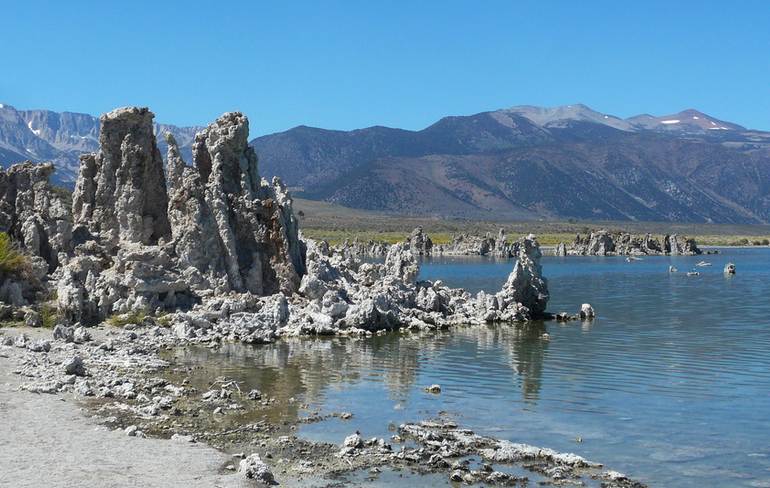
Mono Lake is a saltwater oasis of the Great Basin located 13 miles from Yosemite National Park in California’s Eastern Sierra. Although it has suffered for decades at the hands of humans diverting water from its tributaries, the lake still supports an ecosystem including brine shrimp and millions of birds.
This lake, spanning 70 square miles, is ecologically significant and breathtakingly beautiful.
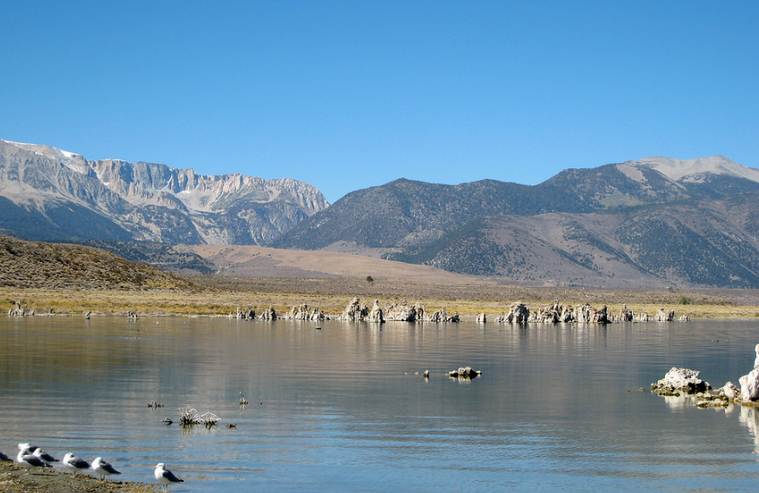
The Mono Lake Tufa State Reserve and surrounding Mono Basin National Forest Scenic Area are natural wonderlands perfect for family activities like boating, swimming, hiking, and biking.
Visitors come across the globe to admire the Sierra Nevada reflected in its still waters. The image is broken only by the tufas and small islands rising hauntingly from the lake’s surface.
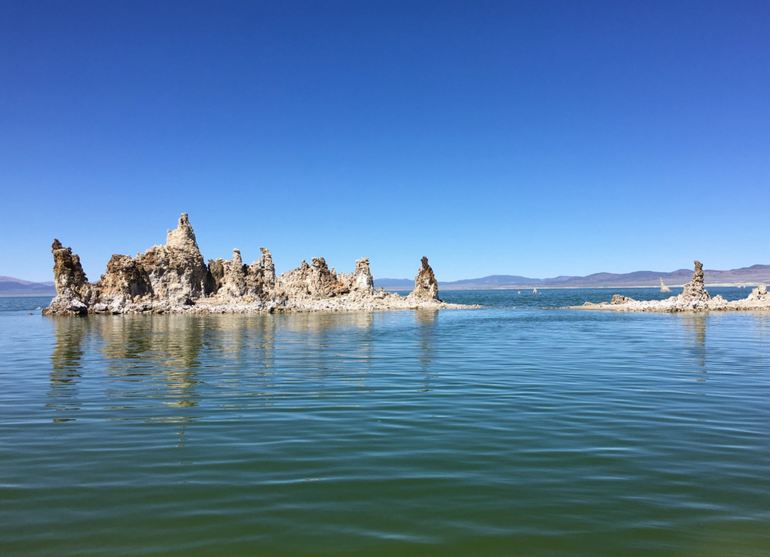
Mono Lake History
Formed over one million years ago, the lake is one of North America’s oldest lakes. Since its creation, the lake has supported a unique ecosystem, including algae, brine shrimp, and millions of migratory and nesting birds.
The first humans to contact Mono Lake were from the Native American tribe of Northern Paiutes called the Kutzadika’a, who foraged the lake for alkali fly larvae. However, humans negatively affected Mono Lake when the Los Angeles Department of Water and Power diverted the lake’s tributary streams in 1941.
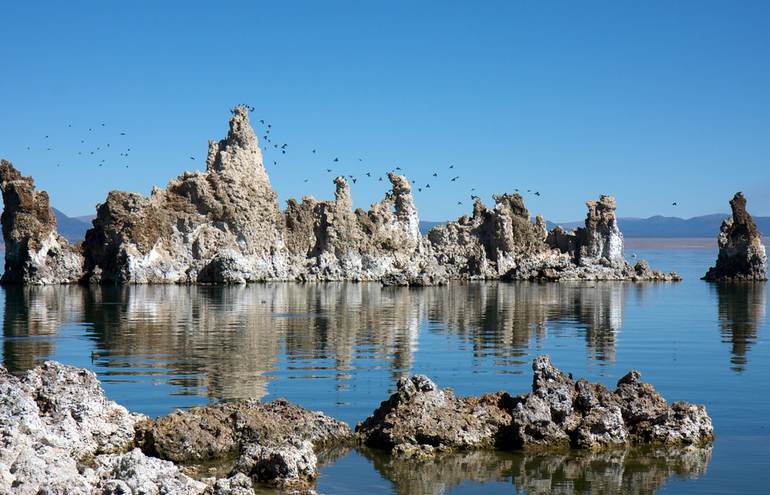
By 1990, the lake had lost half of its volume, dropped 45 feet in depth, and doubled in salinity due to the water diversion. Since 1978, however, the Mono Lake Committee has fought to save the lake. As a result of the committee’s efforts, the lake’s water level has risen to 6,383.56 feet – just a few feet to go until it is at a healthy level again.
Saving the lake from extinction saves an entire ecosystem and preserves one of California’s most dazzling destinations. People come from all over the world to capture Mono Lake on film. Its uniquely stunning beauty and easy accessibility make it a perfect destination for professional and amateur photographers.
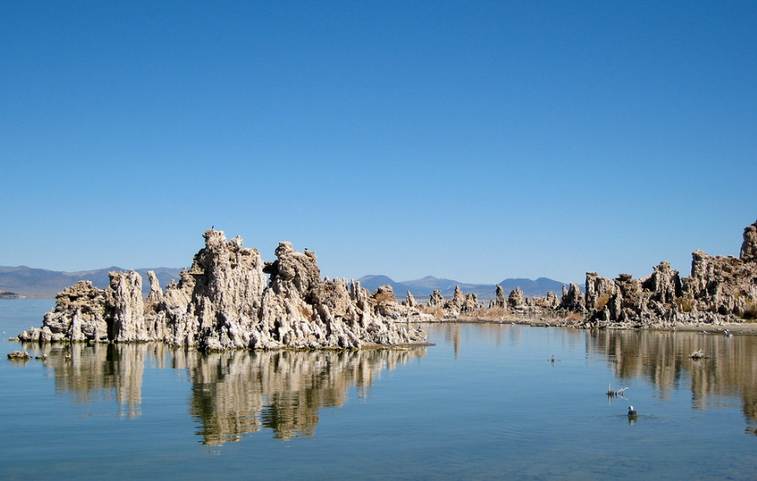
Boating Mono Lake
For those who would instead become a part of Mono Lake’s scenery instead of observing it through a lens, there are plenty of opportunities to glide across the lake’s glassy surface on a canoe or kayak. Adventurous and seasoned boaters are free to bring their small vessel or rent one but should plan to be off the water by noon when high winds can become dangerous.
Boat tours led by experienced guides are available during the summer. These tours allow visitors to experience Mono Lake’s beauty from a unique perspective and provide information about conservation efforts and the lake’s history.
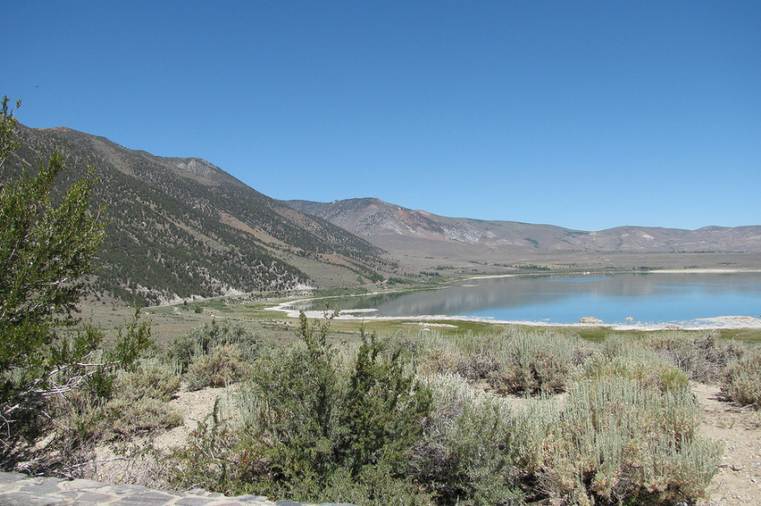
The Mono Basin Scenic Area Visitor Center is another excellent place to learn about the lake’s natural and human history. Its variety of exhibits and knowledgeable staff provide information that will enrich any visit to Mono Lake. The visitor center staff can also help plan the best activities for a stay of any length.
Hiking Trails
Although there are a wide variety of more prolonged and more strenuous hiking and biking trails in the Mono Basin, plenty of small and less challenging trails along Mono Lake allow visitors many opportunities to enjoy its beauty.

The famous one-mile South Tufa Trail takes hikers along the shore to view the area’s landlocked tufas and those that rise majestically from Mono Lake’s waters.
Visitors can immediately loop back to the parking lot or continue down to Navy Beach, home to Mono Lake’s best swimming area.
A dip in the lake is not missed because the water’s high salinity makes it extremely buoyant. Visitors will easily float on the lake’s surface while admiring its stunning surroundings.
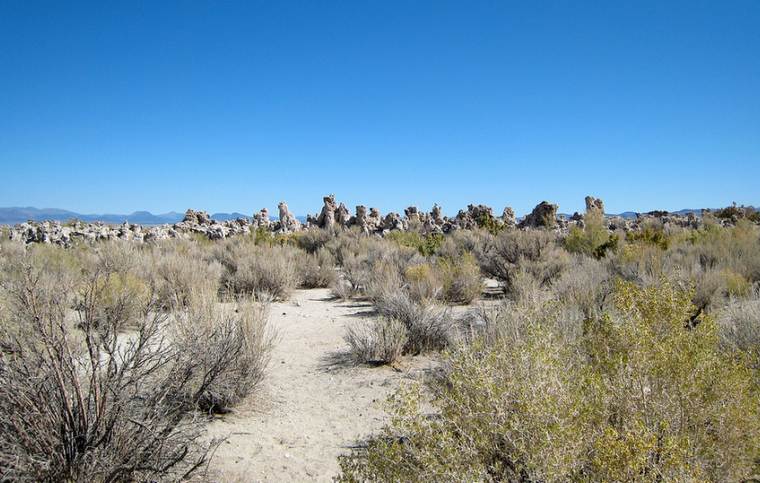
Although it is always fun to explore the lake independently, most visitors find tour offerings enriching, from bird walks to sunset tours to conservationist talks. Most are free and last from one and a half to two hours.
Weekend field seminars are another way to get to know Mono Lake. These in-depth classes led by expert instructors provide instruction on everything from photography to hydrology.
Getting There
Mono Lake is 13 miles east of Yosemite National Park on Highway 395 near Lee Vining. Take I-15 N or Hwy 14 to Hwy 395 from Los Angeles towards Lee Vining and Bishop.
Many tourists who visit Mono Lake also venture to Bodie Ghost Town. If you stay in Mammoth Lakes, these two exceptional destinations can make for a great day trip.
Bodie Ghost Town
California High Sierra Road Trip Ideas
Big Basin Redwoods State Park
- Like
- X
- Digg
- Del
- Tumblr
- VKontakte
- Buffer
- Love This
- Odnoklassniki
- Meneame
- Blogger
- Amazon
- Yahoo Mail
- Gmail
- AOL
- Newsvine
- HackerNews
- Evernote
- MySpace
- Mail.ru
- Viadeo
- Line
- Comments
- Yummly
- SMS
- Viber
- Telegram
- Subscribe
- Skype
- Facebook Messenger
- Kakao
- LiveJournal
- Yammer
- Edgar
- Fintel
- Mix
- Instapaper
- Copy Link
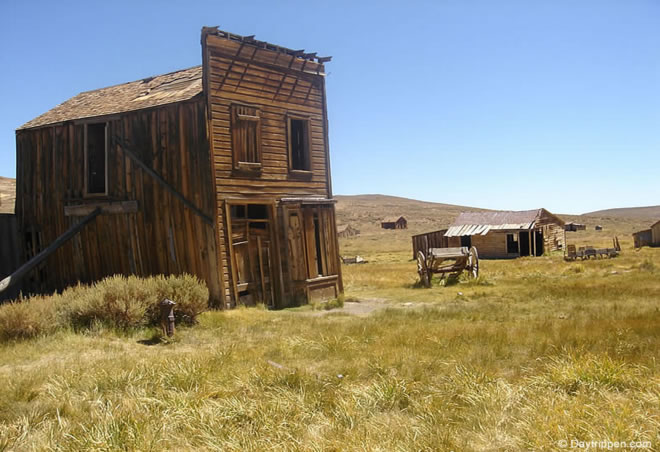
Leave a Reply